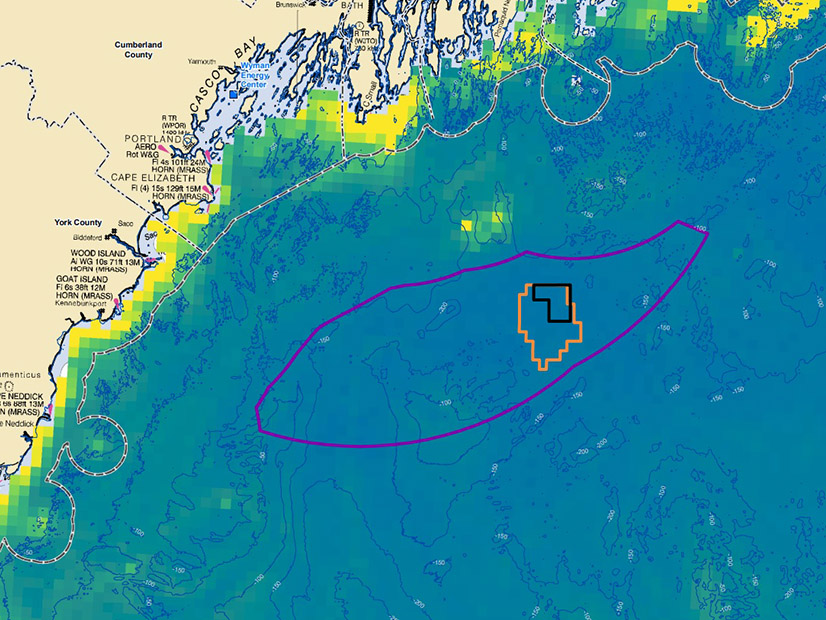
A working group of the Maine Offshore Wind Roadmap is considering a request that the U.S. Bureau of Ocean Energy Management bar OSW development within 75 miles of the state’s coast.
“There is strong interest in the [Fisheries Working Group] in advocating for the state to take a position on moving OSW construction further offshore … to minimize OSW development and fisheries conflict,” Meredith Mendelson, deputy commissioner of the Department of Marine Resources and co-chair of the working group said during a roadmap advisory committee meeting Friday. “We’ve had multiple discussions around this, and I expect we will continue to for some time, but we wanted to bring it forward to the advisory committee because we think this is an important issue.”
Mendelson said the group has not settled on a proposed distance for the prohibition. A document released by the working group Jan. 18, however, said the Fisheries Working Group “strongly encourages the state to advocate for BOEM and the [Gulf of Maine] Interagency Task Force to prohibit the development construction of OSW turbines within 75 nautical miles or less from the Maine coast.”
At that distance, the prohibition would easily exceed the distance of all active BOEM lease areas on the East Coast.
Vineyard Wind I, for example, is sited 30 nautical miles from the Massachusetts coast, and the lease areas recently announced by BOEM for the New York Bight range between 20 and 69 nautical miles from the New York coast.
Gov. Janet Mills signed a law last summer that prohibits new OSW development in state waters, which extend 3 nautical miles from the coast. Mills had originally proposed a 10-year moratorium on OSW in state waters, but she eventually agreed to a permanent ban to protect commercial lobster harvesting.
The Maine Governor’s Energy Office filed an application in October to lease a site in federal waters in the Gulf of Maine for a floating offshore wind research array. The preferred site, according to the application, is 25 nautical miles from the nearest point on the mainland.
Considerable engagement with members of the fishing industry went into selecting the proposed array site, according to the application. Selection of a site “no less than 17 nautical miles offshore” reduces “potential impacts on inshore fisheries,” the application said.
The call to extend the state-waters ban to federal waters would be part of a wider package of recommendations that the advisory committee will consider related to OSW development and the state’s fishing industry.
The group shared 11 initial recommendations with the committee Friday, including encouraging the state and BOEM to engage the fishing industry directly in the development of wind areas in the Gulf of Maine. In addition, the group wants to see the state initiate a port assessment as wind areas are identified to determine the implications for local port economies.
Three other working groups delivered their initial recommendations to the committee in December, and all the groups will refine their recommendations with a goal of releasing an official set of draft recommendations in July. The final roadmap is due at the end of the year.


